
8 minute read
Ayodhya Decorated with Nearly 400 Quintals of Flowers Sudeepa Ghosh
Ayod ya decorated wit nearly 400 quintals o lowers
About 600 kg of red and pink roses, 240 kg gerbera, 300 kg carnations and orchids from Thailand were brought
Advertisement
Ayodhya was decorated with nearly 400 quintals of flowers for the ‘bhumi pujan’ of the Ram temple.
The blue ‘aparajita’ or Vishnukanta flowers, that are grown in the rural parts of
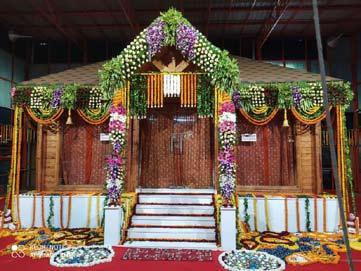
Bengaluru, were brought in to the holy city for the muchawaited occasion.
The double-toned marigolds in orange and red were brought in from Kolkata, while orchids were imported from Thailand.
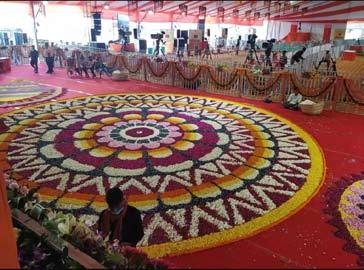
About 600 kg of red and pink roses, 240 kg gerbera and 300 kg carnations were also brought in to adorn the venue of the bhumi pujan and also the adjoining temples.
“Nearly 400 quintals of flowers are used to decorate — Sudeepa Ghosh
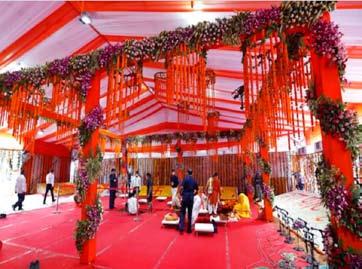
the ‘bhumi pujan’ site. Ayodhya and the temples will wear a festive look - the kind never seen before,” said Prem Nath, who was overseeing flower decorations on the ‘bhumi pujan’ site and the makeshift Ram temple.

According to Prem Nath, flowers were brought also to make ‘rangoli’ at more than 50 spots in the holy city by the students from Ram Manohar Lohia Faizabad University.
“The aparajita flowers gave a blue shade to the rangolis,” he said.
Flower decorators decorated the stretch between Saket PG College, where the Prime Minister landed, to the Nayaghat area.
The occassion was held on 5 th August, 2020.
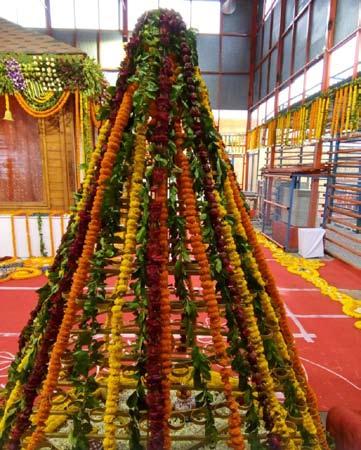
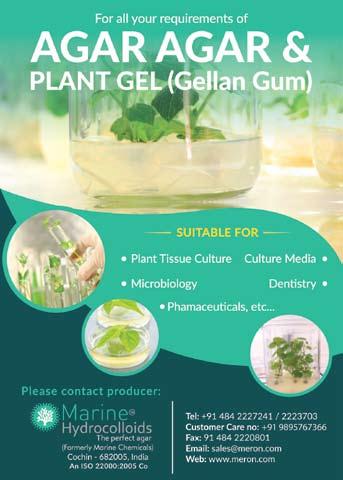

Indoor Plants A True Heaven
Any plant grown indoors, typically in a container can be termed as indoor plants or houseplants. There are three groups of houseplants: foliage, flowering, and cactus and succulents.
Over the past twenty years houseplants have grown in popularity. Offered in a wide variety of sizes, shapes, colours and textures, houseplants beautify our homes and help soften our environment. They havebeenscientificallyproven to improve our health by lowering blood pressure and removing pollutants from the air we breathe. When selecting a houseplant, choose reputable suppliers who specialize in growing houseplants. Get off to a good start by thoroughly examining each plant. Watch for brown edges and spindly growth with elongated stems and large gaps between new leaves. Inspect leaves and stem junctions for signs of insect or disease problems. Check any support stakes to make sure they are not hiding broken stems or branches. Finally, make sure the plant is placed in an area that suits its optimal requirements for light, temperature and humidity.
Environmental conditions:
With the exception of the very darkest areas, you can always find a houseplant with growth requirements to match the environmental conditions in your home. The most important factors are light intensity and duration. The best way to determine the intensity of light at a window exposure area is to measure it with a light meter. A light meter measures light in units called foot-candles. One footcandle is the amount of light from a candle spread over a square foot of surface area.
Plants that prefer low light may produce dull, lifelesslooking leaves when exposed to bright light. Bright light can also cause leaf spots or browntipped scorched margins. Conversely, not enough light can cause slow, spindly growth and the development of small pale leaves. Plants may not flower. If they do, the buds may drop, or the flowers may fade quickly. Variegated leaves often revert to being completely green.
Temperature and Humidity
1. Nearly all houseplants prefer a humidity level of 50% or more 2. A simple method to increase the humidity is to place plants in a pebble tray. This is a tray lined with pebbles and filled with enough water to reach to just below the pebble’s surface. 3. Plants prefer temperature as of 23 0 C days and 18 0 C at nights (in general, 5 degrees cooler at night than in day).
Watering and fertilization
To determine your plant’s — Ravi Savaliya water need, simply stick your index finger into the soil. Most plants are ready for water if they are dry one-inch down from the surface of the soil. To water properly, most plants prefer a really thorough drink with tepid water. Moisten the soil completely until the water is coming out of the bottom of the pot. Do not let the plant sit in this drainage water.
Overwatering can cause leaf spots which are soft and dark brown. It can also cause lower leaves to yellow and to drop.
All houseplants need adequate amounts of food to grow. Look for a balanced plant food with an N-P-K analysis like 10-10-10. Feeding should be done only while the plant is actively growing or flowering. Three feedings during the growing season, starting in April and extending through June, is usually sufficient. Themostcommonly used plant foods are dissolved in water. Some gardeners
prefer the encapsulated, slowrelease fertilizers that may be sprinkled on the soil surface or worked into the soil.
Root Media
Because of the physical limitations of the container, houseplants need specialized media. Do not use straight field soil. It lacks correct physical properties. It is best to buy a potting mix from a garden centre like cocopeat, Vermiculite, Perlite.
Container media needs to be able to hold nutrients (have a high cation exchange capacity). Organic matter will help increase nutrient-holding capacity.
The pH (acid balance) of the soil needs to be favourable for houseplant growth. A pH range of 5.5 to 6.5 is best.
Grooming of House Plant
Removing any shrivelled or discoloured leaves and cleaning dust from your house plant will not only make it look more attractive; it also allows the plant to function more effectively. Leaves can be cleaned with a soft cloth while supporting the leaf with one hand. Some gardeners use commercial leaf shiners.
One simple technique to control growth is by pinching back the growth tip with your thumb and forefinger. The species name ‘nocturnum’ refers to the species habit of opening its small, heavilyscented flowers at night. The flowers release powerful sweet perfume at night.
Pinching is same as pruning on a small scale. Pinching back the young growing tip causes the plant to branch out below the pinch, promoting new growth.
Repotting
Plants in pots up to 10 inches in diameter should be repotted annually. Large container plants should be repotted every 2 years. This prevents the plant from becoming pot-bound. Potbound plants have very slow leaf and stem growth. The soil dries out quickly even with frequent watering and roots may begin to grow out of the drainage hole.
Diseases and Pests
Spots, rots, wilts and mildews on your houseplant are symptoms of disease. It is important to identify the problem correctly so it can be treated effectively. Black shrivelled sections of stem just above the soil line may indicate a disease called blackleg caused by a fungus. Soft, slimy stems with black or brown decayed areas can be symptoms of crown rot, also caused by a fungus. Brown leaf spots which grow and merge can be either bacterial or fungal leaf spot diseases. If any of these symptoms occur, a recommended treatment includes destroying infected leaves, using a fungicide and modifying cultural practices.
There are a variety of pests which plague houseplants like Whitefly, Aphid, Thrips, Scale, Mealy bug etc. Identify the pest and apply the appropriate remedy as soon as the first symptoms appear. Repeated treatments may be required to break the life cycle of overlapping generations of most of these insects.
Plants for indoors
A wide range of plants can be grown indoors ranging from money plants to a rose plant that loves bright sunlight; a tiny; African violet or sapling of a rubber tree which can grow in to a giant tree can all be used for indoor gardening. But then one will have to see that the proper place for each plant is provided. The rose plant will have to be placed in a sunny balcony, money plant and African violet on a shady windowsill and the rubber tree sapling as long as it can be accommodated in the pot and indoors. Sunloving plants too can be kept indoors temporarily, say for a function, such as a birthday party. A list of some plants suitable for keeping indoors is given below.
Decorative foliage plants
1. Dieffenbachia 2. Brassaia 3. Aglaonema 4. Alocassia 5. Dracaena 6. Ferns 7. Maranta 8. Alpinia 9. Ficus varieties 10. Oxalis 11. Palms 12. Anthurium 13. Schefflera
For hanging baskets
1. Fittonia 2. Tradescantia 3. Ferns 4. Selaginella 5. Chlorophytum 6. Episcia 7. Begonia 8. Money plants
9. Peperomia 10. Hoya 11. Pilea 12. Orchids 13. Plectranthus
Flowering plants
1. African violets 2. Orchids 3. Episcia 4. Flowering begonia 5. Impatiens 6. Calla 7. Spathiphyllum
Creepers
2. Passiflora tricolour 3. Philodendron 4. Piper crocatum 5. Syngonium 6. Vanilla 7. Cissus 8. Hedera helix 9. Hoya
Effects
Indoor plants reduce components of indoor air pollution, particularly Volatile Organic Compounds (VOC). VOC’s have been reported to reduce by about 50-75% with the presence of a houseplant. Plants also appear to reduce airborne microbes and increase humidity. Moreover,theactive interaction with houseplants “can reduce physiological and psychological stress compared with mental work.” Indoor plants can provide psychological benefits such as stress-reduction and increased pain tolerance. n
Author: Ravi Savaliya, Student (Masters in Horticulture), Navsari Agricultural University, Gujarat
E-mail: ravisavaliya497@gmail.com












